It has become a tradition for representatives of Benský región - Terra Montanae, in collaboration with OOCR Central Slovakia, to embark on explorations of similar projects each autumn, such as the Barbora route in Central Slovakia. This year, they ventured together to St. Barbara in Sardinia, accompanied by representatives from the city of Banská Bystrica, Zvolen, the Bishop's Office in Banská Bystrica, and Matej Bel University.
Matej Bel University in Banská Bystrica is involved in the international research project "INCULTUM," the outcome of which includes the portal www.banickepoklady.eu, closely associated with the longest educational route—the Barborská route.
The foundation's project, Mining route of St. Barbora, shares similarities with the Barbora route in Central Slovakia not only in name but also in content. It entails a circular route through southwestern Sardinia, a region renowned for its historical mining activity. Stretching approximately 500 km, the route traverses areas where local mines primarily extracted lead, silver, and zinc. The Cammino Minerário di Santa Barbara Foundation (CMSB) is a founding member of the European Federation of Mining Routes of Saint Barbara, which submitted an application for inclusion in the list of European Cultural Routes on December 4, 2020. Hence, one of the objectives of the journey is to foster mutual cooperation and seek membership in this federation.
Cammino Minerario di Santa Barbara - day 1
The first day commenced with the official programme at the headquarters of the CMSB Foundation, where our Sardinian friends warmly greeted us. We introduced them to our Barbora route, and in return, they arranged an engaging itinerary for us, including a visit to the mining museum in the city of Iglesias. Housed in the former school for miners, the museum features a "experimental" school mine where students once trained. The day proceeded in a convivial atmosphere, with opportunities to savor Sardinian cuisine. We eagerly anticipate tomorrow, when we will embark together on the first stage of the Sardinian route of St. Barbara.
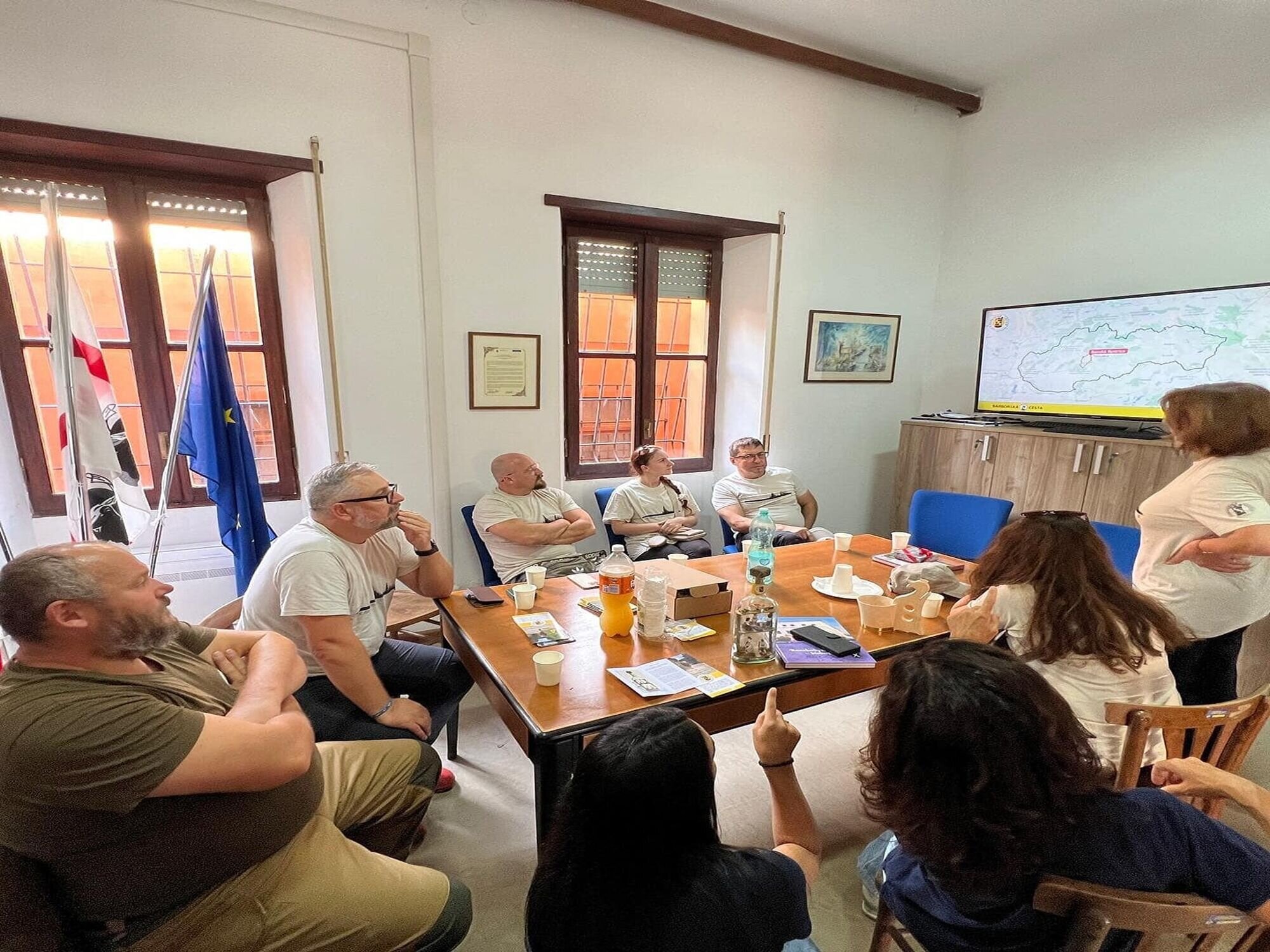 Photo source: OZ Terra Montanae
Photo source: OZ Terra Montanae
Cammino Minerario di Santa Barbara - day 2
On the first day of our journey along the Cammino Minerario di Santa Barbara, we were accompanied by two charming ladies: the director of the Ponziana Leda Foundation and her colleague, Margherita Concu. Our trek commenced with a rather steep ascent from the town of Iglesias to the monastery of Buon Cammino. Here, we were welcomed by the Klariska nuns, who stamped our credentials—pilgrim passports—marking the beginning of our journey with CMSB. From the outset, we traversed the oldest limestone-dolomite rocks in Italy. This area harbored extensive deposits of lead, zinc, and silver, which were subjects of intensive mining activity for centuries, dating back to Carthaginian and Roman times. Following periods of dormancy, the 13th century witnessed a resurgence in metal mining, spurred by the discovery of earlier Roman works. Numerous surface mines, or "pits," were established, penetrating to considerable depths and yielding abundant quantities of lead and silver. In the latter half of the nineteenth century, industrialization across Europe spurred intensified mineral extraction. Founded in 1850 by entrepreneurs from Turin and Genoa, Monteponi emerged as one of Italy's foremost mining enterprises. Today, extensive dilapidated industrial areas remain, yet thanks to CMSB, they are experiencing a renaissance. Museums are emerging within these spaces, showcasing the technologies of yesteryear and the lives of the thousands of miners and workers who once toiled there. It is captivating to witness former miners transition into tourist guides, proudly presenting their former workplaces. I believe many industrial structures lie dormant in our own country, awaiting a restorative touch that could bring them back to life.
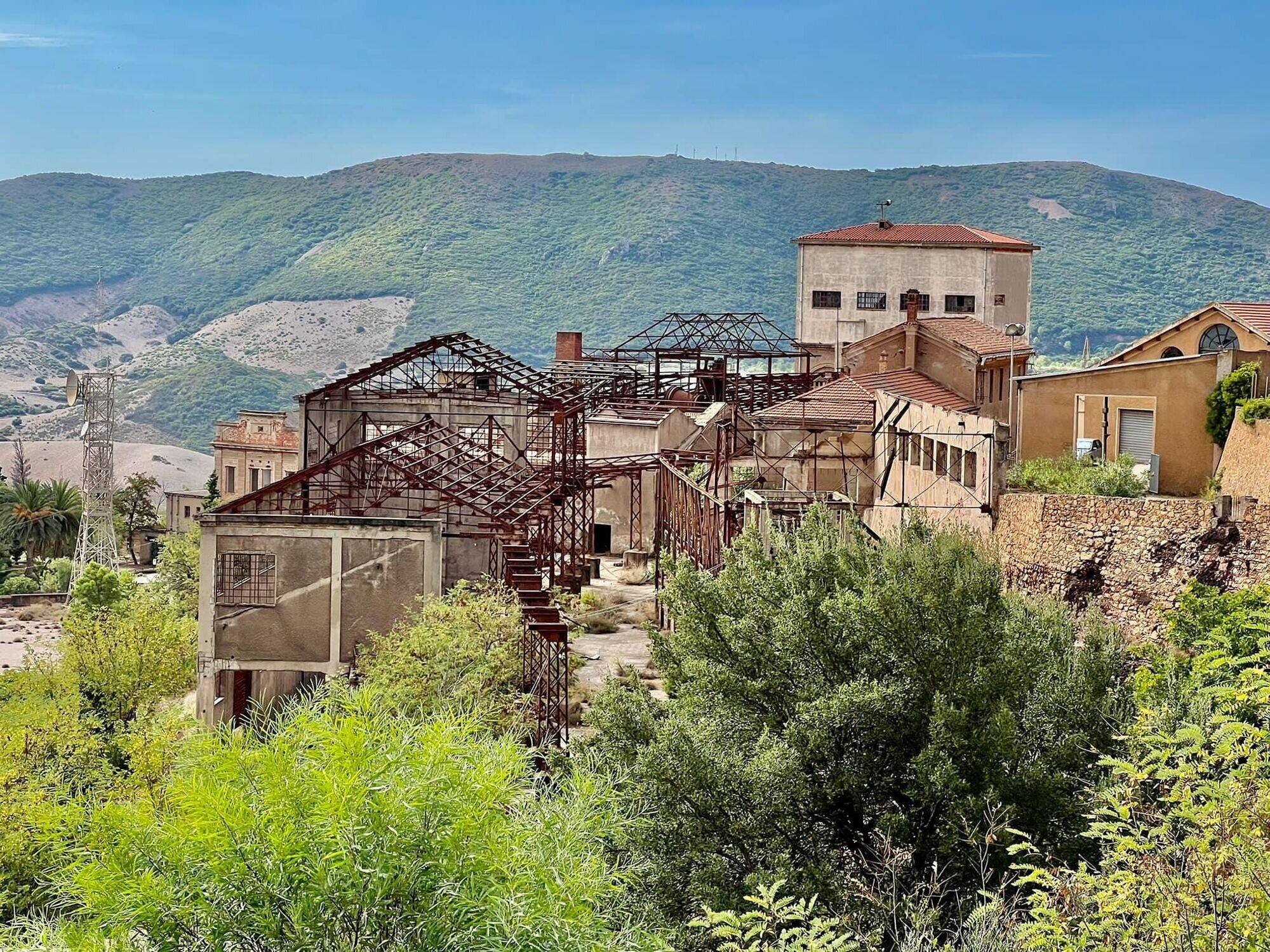 Photo source: OZ Terra Montanae
Photo source: OZ Terra Montanae
Cammino Minerario di Santa Barbara - day 3
We spent our final night in the coastal town of Nebida, once home to a complex of facilities for processing mined zinc and lead ores. In 1910, Nebida boasted a population of over 3,000 residents who lived and worked in the area. Today, the population has dwindled to approximately 100 inhabitants. Remnants of the former mining infrastructure, now just skeletal frames of industrial architecture, stand as a testament to Sardinia's heritage, listed on the UNESCO register. @cammino_minerario_santabarbara offers many similar sites the opportunity for rejuvenation. Our destination the following day was the village of Masua, which sprang up near zinc mines managed by the Montesanto company since 1859. Initially, workers would manually transport mined ore in wicker baskets on their backs to the port established near Masua beach, overlooked by the Pan di Zucchero limestone chimney. One of Sardinia's most unique mining constructions, designed by engineer Cesare Vecelli, is the Porto Flavia traffic tunnel. Constructed between 1922 and 1924 and named after Vecelli's eldest daughter, the tunnel facilitated the transportation of zinc-containing rock. Embedded within limestone rock opening out to the sea, the structure comprises two tunnels spanning 600 meters, along with silos capable of holding up to 10,000 tons of material. The upper tunnel facilitated the transportation of excavated material via a mining railway, which was then transferred to ships directly from the sea via an extended 16-meter conveyor belt arm. Today, mining activity in the area has ceased, leaving behind only abandoned mine sites. One of the former miners' hostels now serves as a scout hostel for pilgrims, managed with exemplary care by Valerio Pintus. While the beach at Masua is no longer a bustling port, it remains a beloved destination for holidaymakers seeking sun and sea.
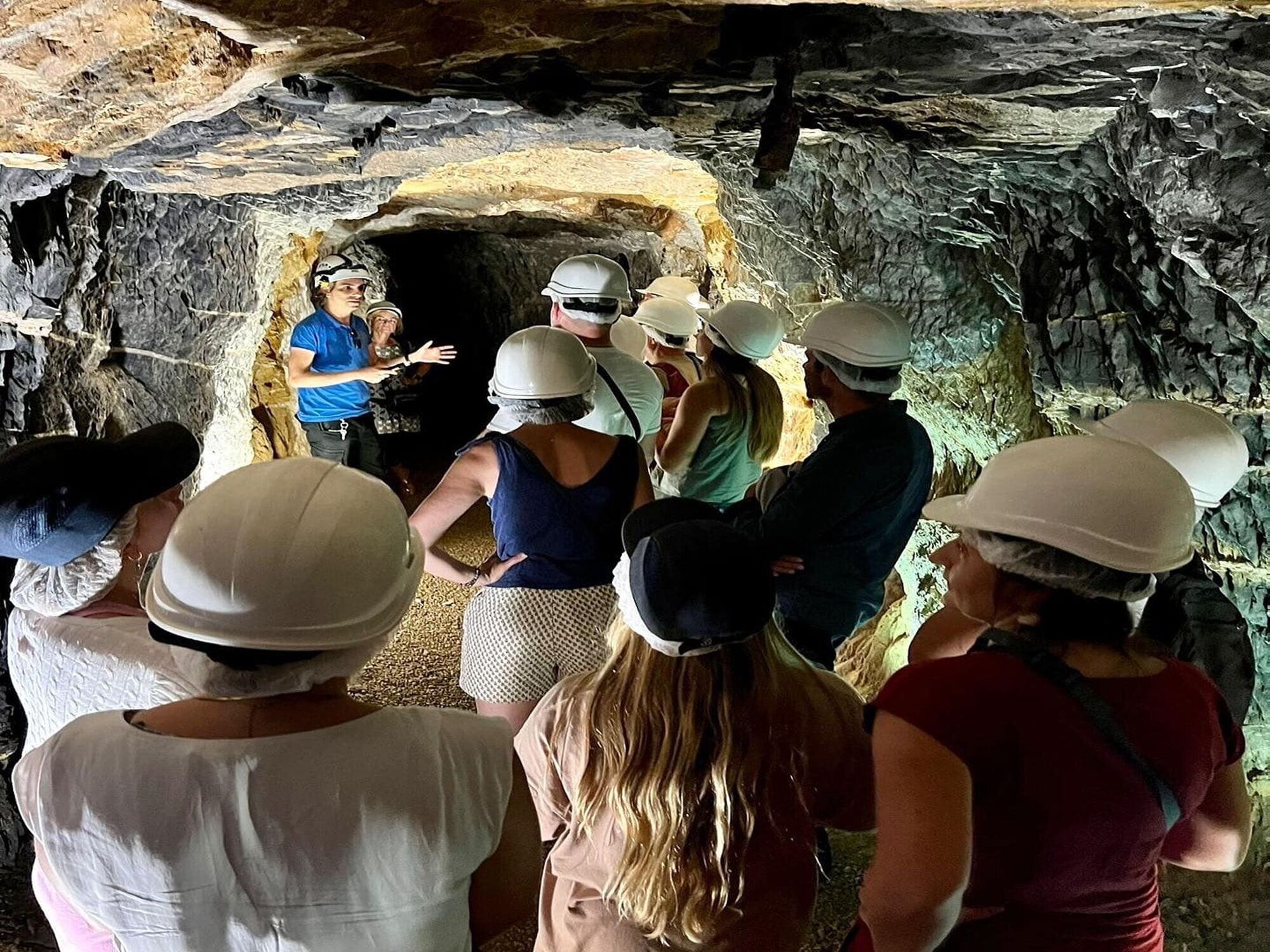 Photo source: OZ Terra Montanae
Photo source: OZ Terra Montanae
Cammino Minerario di Santa Barbara - day 4
Today, we faced one of the most challenging stages on @cammino_monerario_santabarbara. The route spanned approximately 20 km, with an ascent and descent totaling 887 meters each. The strenuous climb and descent were rewarded with breathtaking panoramic views of the Sardinian coastline. Despite it being the latter half of October, the air temperature soared to 27°C, and our main concern became the scarcity of water. The trail proved to be arduous, and we only took our first break upon descending to sea level, at a spot known as the Grand Canal. True refreshment came in the form of a revitalizing swim and a cold beer at Cala Domestica beach. Once the terminus for a railway transporting mined minerals, complete with a small harbour and loading dock, Cala Domestica's railway opened in 1904 as Italy's first electrified line. Today, stone bridges serve as reminders of its 4.8 km track. We didn't reach our final destination, the town of Buggerru, until sunset. At the turn of the 20th century, Buggerru was home to five times more inhabitants than today. Locals dubbed it "little Paris" due to its mines being operated by the Parisian Societé des mines de Malfidano. The company also brought a theatre, cinema, and club exclusively for the elite French society families residing in Buggerru. However, local miners endured inhumane working conditions for meagre wages, often working gruelling shifts and facing frequent fatal accidents. On Sunday, September 4, 1904, discontented miners confronted the company's management, staging a work stoppage and presenting their demands. The rebellion was brutally suppressed by the army, resulting in three fatalities and numerous injuries. This day became known as the Buggerro massacre, igniting Italy's first general strike.
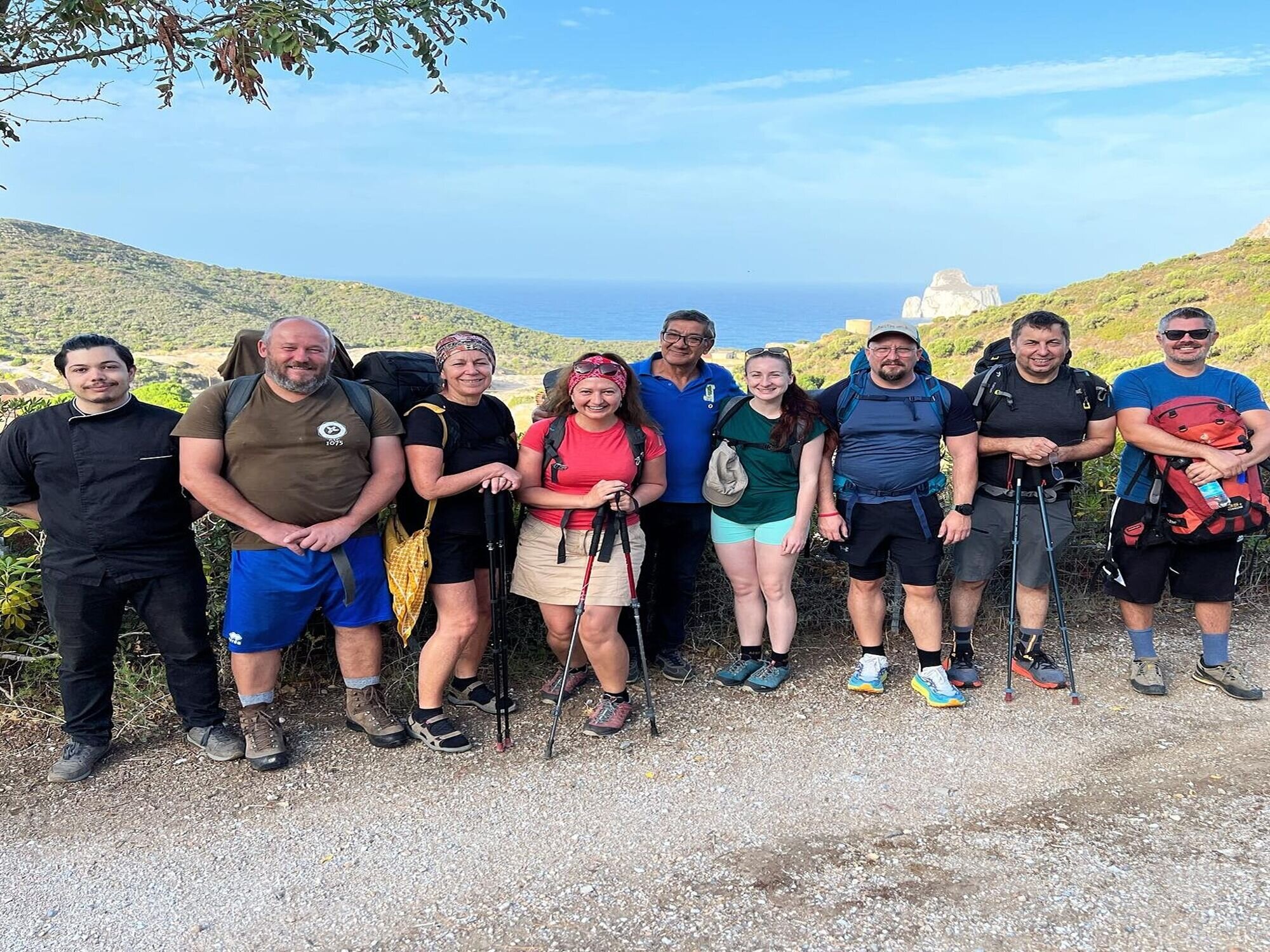 Photo source: OZ Terra Montanae
Photo source: OZ Terra Montanae
Cammino Minerario di Santa Barbara - day 5
We began the morning with a tour of Buggerru since we arrived in town after dark yesterday. Former industrial buildings, weathered by time, imparted a dramatic, almost oppressive atmosphere, particularly against the backdrop of the cloudy autumn sky. Thankfully, today's journey was shorter as we made our way to the coastal village of Portixeddu. The initial stretch of the route involved a steep ascent followed by a descent. After approximately two hours, we found ourselves among sand dunes adorned with pine forests, captivating us with their vibrant green hues and invigorating scent. These dunes border Portixeddu beach, also known as Rio Mannu, as the Mannu river empties into the sea here. In fair weather, the crystal-clear sea assumes a stunning turquoise hue. Its rapidly sloping bottom, coupled with strong currents and the mistral wind, creates ideal conditions for surfing, making this beach a favorite among surfers. Near our hotel lies a farm where local delicacies are sold. Here, we sampled homemade sausage, cheese, olives, and both white and red wine. We also stumbled upon a local delicacy known as Casu marzu cheese. This cheese is distinctive as it is deliberately infested with larvae from the cheese skipper fly (Piophila casei). Derived from the local variant of Pecorino Sardo cheese, Casu marzu is consumed in an advanced stage of decomposition, along with live larvae. In Sardinian, Casu marzu translates to "rotten cheese." The larvae found in the cheese are translucent white, approximately 8 mm in length, and can jump up to 15 cm high. While Casu marzu is generally considered safe to eat, consuming it poses risks, particularly for those allergic to the larvae or cheese itself. It is crucial to consume the cheese before it reaches a toxic stage of decomposition, ensuring the larvae remain alive.
 Photo source: OZ Terra Montanae
Photo source: OZ Terra Montanae
Cammino Minerario di Santa Barbara - day 6
This part of Sardinia is aptly named Costa Verde - Green Coast. From the terrace of our hotel, we behold the towering mountains enveloped in mist after the night's rain, evoking the primeval forests of South America. The tempestuous sea crashes against the quaint square of Portixeddu, from where we ascend the steep slope. After roughly half an hour, we reach the summit and are greeted by a magnificent vista of Capo Pecora. This granite promontory stands in stark contrast to the limestone cliffs dominating the coastline, their hues juxtaposing the turquoise sea and the verdant Mediterranean scrub. Cliffs and solitary granite boulders are sculpted and battered by the relentless forces of the sea and wind, many assuming shapes reminiscent of various objects. Among them lies a "beach with a dinosaur egg" and other archaeological treasures of significant value. The Holy Well and the Giant's Tomb, located near the ruins of the Atzeni sheepfold, date back to around 1200 BC. The well was utilized for water worship, while the megalithic tomb served as a burial site, offering glimpses into human presence in this area since the Nuragic era. It's a remote, rugged, and desolate yet stunningly beautiful place, imbued with an unforgettable mystical ambiance. Descending from the mountains, the landscape undergoes a dramatic transformation, with sand dunes resembling an oasis in the desert. Our journey proceeds with a strenuous 5 km trek along the beach. The initial stretch comprises a "belt" of fine, soft sand known as "singing sands" due to the creaking sound when walked upon. Regrettably, due to the strong mistral winds and crashing waves, we couldn't experience this phenomenon firsthand. As we progress, the sandy shoreline transitions to rocky terrain, impeding our advance. Exhausted and some of our party drenched by the waves, we finally reach Piscinas beach. Unfortunately, our initial plan to swim in the sea proves unfeasible, prompting us to proceed to our camp, where we conclude the day with a delightful dinner.
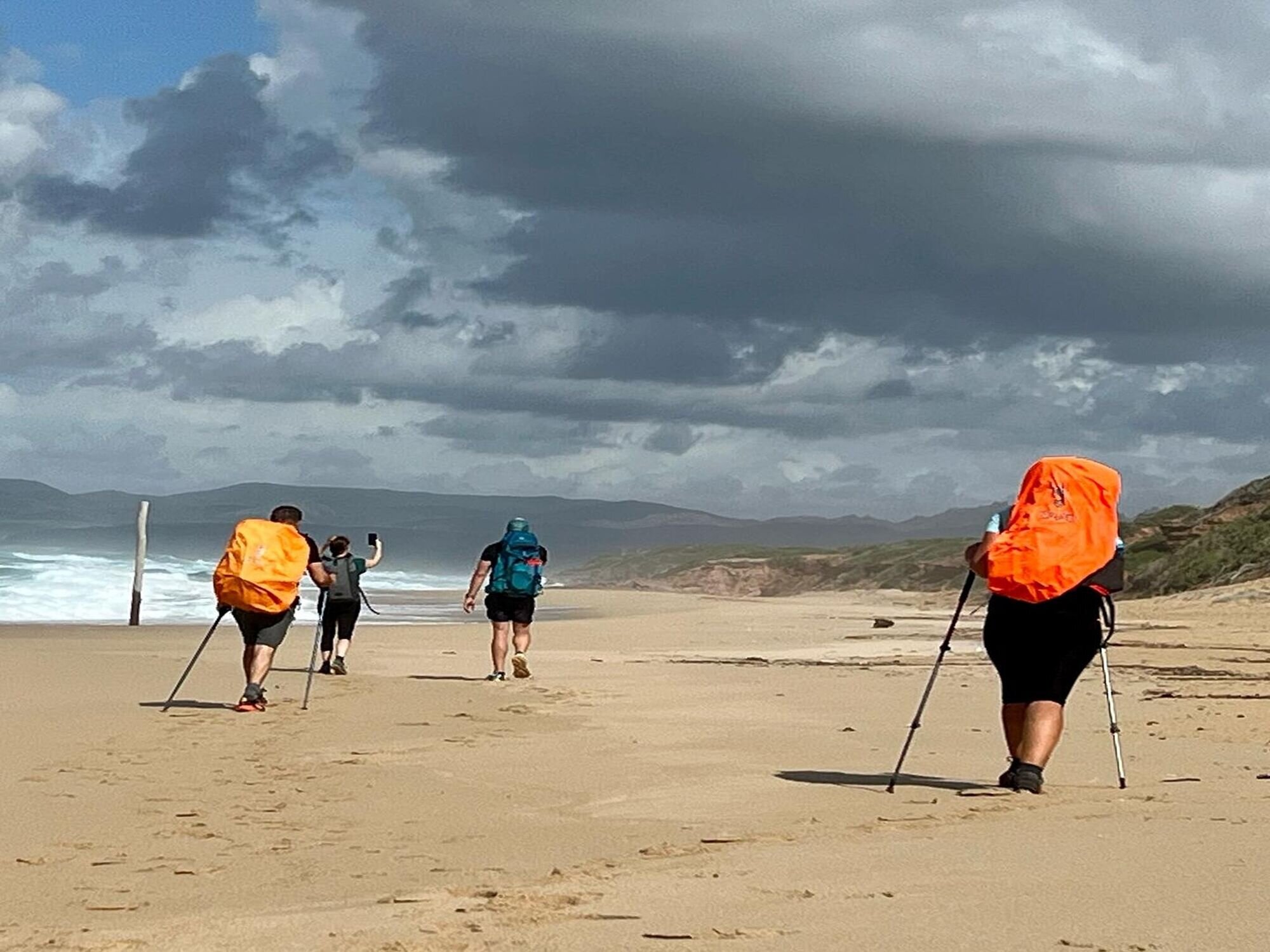 Photo source: OZ Terra Montanae
Photo source: OZ Terra Montanae
Cammino Minerario di Santa Barbara - day 7
Today marks our final day on the remarkable Cammino Minerário di Santa Barbara. We've chosen to spend our remaining hours before departing for Cagliari, where our flight home awaits, on the shores of Piscinas beach. For nearly a century, this area served as a storage site for extracted minerals, transported here by a small railway from the Ingurtos mine before being loaded onto ships. The warehouse buildings and loading equipment remained in use until the late 1940s before falling into disrepair. It wasn't until the early 1990s that some of these structures underwent restoration and were repurposed for tourism, including use as a hotel. Despite ongoing renovations at Hotel Le Dune, remnants of the former railway still remain, lending a "western" atmosphere when combined with the sand dunes. Presently, two beach bars offer food, beverages, sports equipment rental, and the opportunity to receive a stamp in your pilgrim's passport.
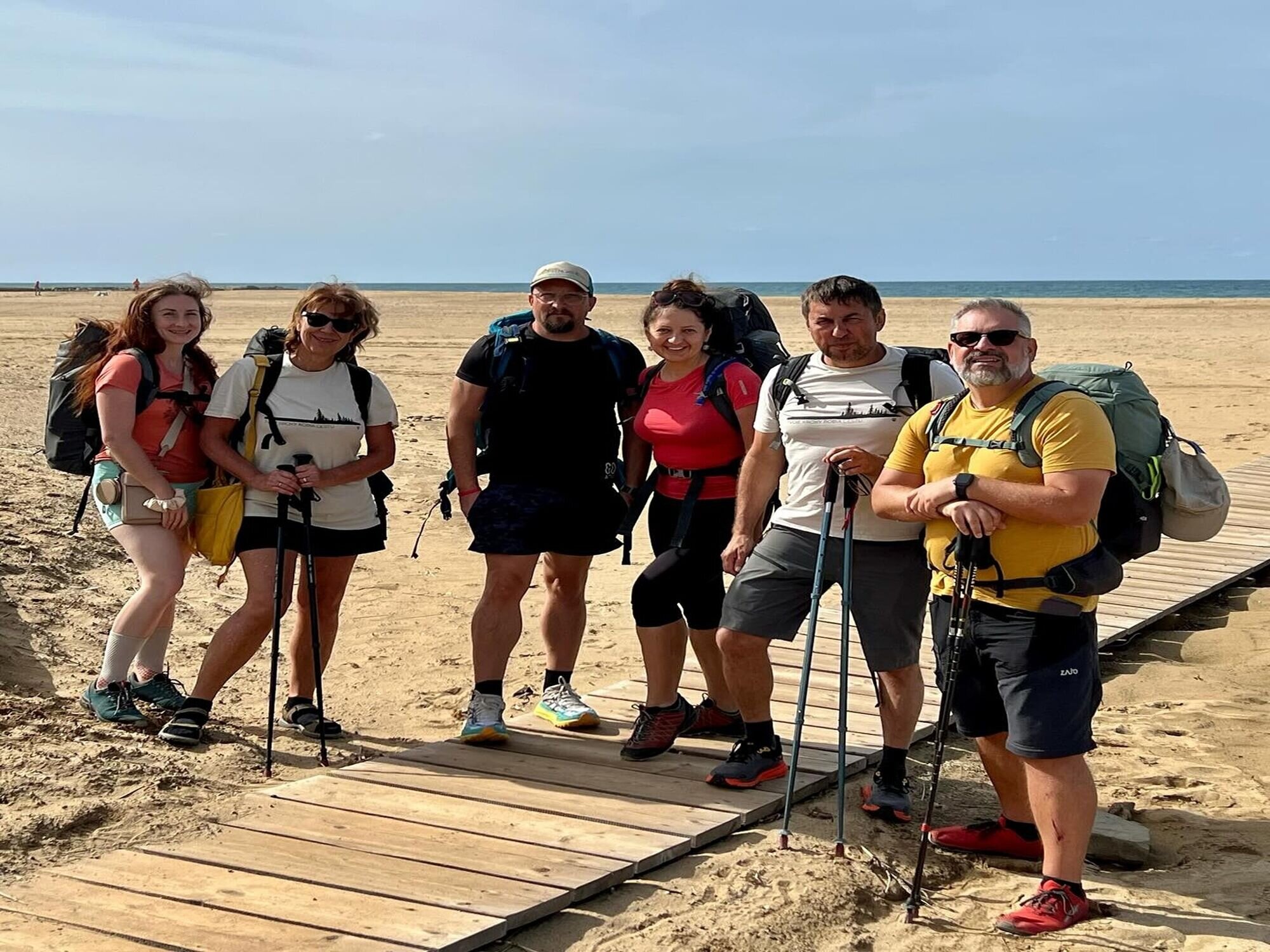 Photo source: OZ Terra Montanae
Photo source: OZ Terra Montanae
Our Slovak Barbora route and the Cammino Minerário di Santa Barbara share many similarities. Even here in Sardinia, visible traces of mining and mineral processing linger throughout the countryside. Following the cessation of mining activities, cities and villages experienced depopulation, and hopes for their rejuvenation are now tied to tourism-related projects. This is precisely why we have forged partnerships with our Sardinian counterparts and are seeking membership in the European Federation of Mining Routes of St. Barbara - MINES.B. We are confident that our inaugural meeting has sparked new inspirations and opportunities for collaboration between our paths. We eagerly anticipate our next gathering planned in Slovakia during the spring months of 2024.










